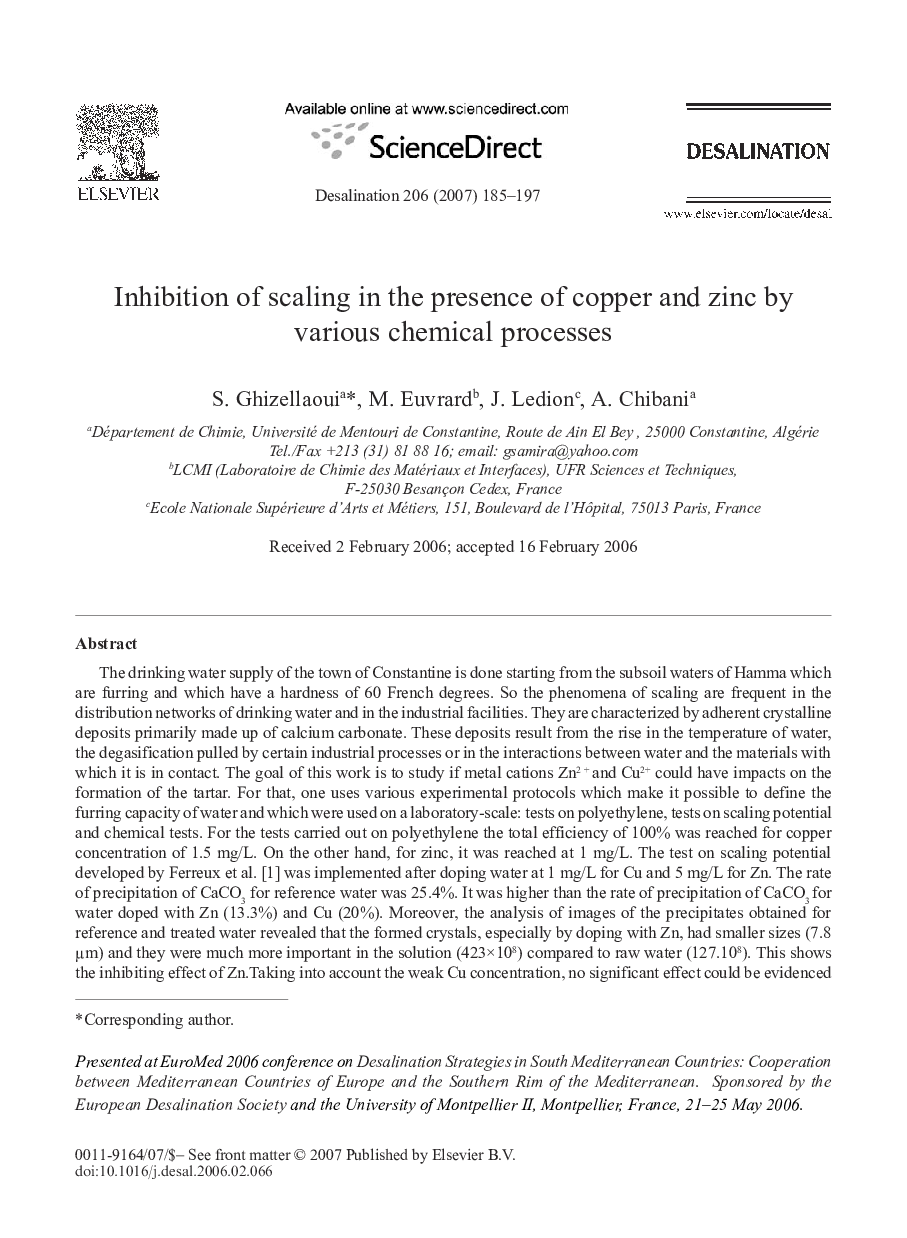| کد مقاله | کد نشریه | سال انتشار | مقاله انگلیسی | نسخه تمام متن |
|---|---|---|---|---|
| 628419 | 1455484 | 2007 | 13 صفحه PDF | دانلود رایگان |

The drinking water supply of the town of Constantine is done starting from the subsoil waters of Hamma which are furring and which have a hardness of 60 French degrees. So the phenomena of scaling are frequent in the distribution networks of drinking water and in the industrial facilities. They are characterized by adherent crystalline deposits primarily made up of calcium carbonate. These deposits result from the rise in the temperature of water, the degasification pulled by certain industrial processes or in the interactions between water and the materials with which it is in contact. The goal of this work is to study if metal cations Zn2 + and Cu2+ could have impacts on the formation of the tartar. For that, one uses various experimental protocols which make it possible to define the furring capacity of water and which were used on a laboratory-scale: tests on polyethylene, tests on scaling potential and chemical tests. For the tests carried out on polyethylene the total efficiency of 100% was reached for copper concentration of 1.5 mg/L. On the other hand, for zinc, it was reached at 1 mg/L. The test on scaling potential developed by Ferreux et al. [1] was implemented after doping water at 1 mg/L for Cu and 5 mg/L for Zn. The rate of precipitation of CaCO3 for reference water was 25.4%. It was higher than the rate of precipitation of CaCO3 for water doped with Zn (13.3%) and Cu (20%). Moreover, the analysis of images of the precipitates obtained for reference and treated water revealed that the formed crystals, especially by doping with Zn, had smaller sizes (7.8 μm) and they were much more important in the solution (423×108) compared to raw water (127.108). This shows the inhibiting effect of Zn. Taking into account the weak Cu concentration, no significant effect could be evidenced during the tests on scaling potential.These conclusions are in agreement with those obtained previously by Ghizellaoui et al. [2] during chemical tests. Indeed, the results showed that Cu and Zn are very effective inhibitors for Zn concentration of 5 mg/L and Cu concentration of 3 mg/L with Langelier saturation index (LSI) close to 0.5 whereas for the reference water it was close to 0.8.Lastly, the analysis under the electron microscope with sweeping (MEB) and by microsounder showed that the dominant crystalline variety was calcite and copper and zinc distribution was not homogeneous on calcium carbonate.
Journal: Desalination - Volume 206, Issues 1–3, 5 February 2007, Pages 185-197